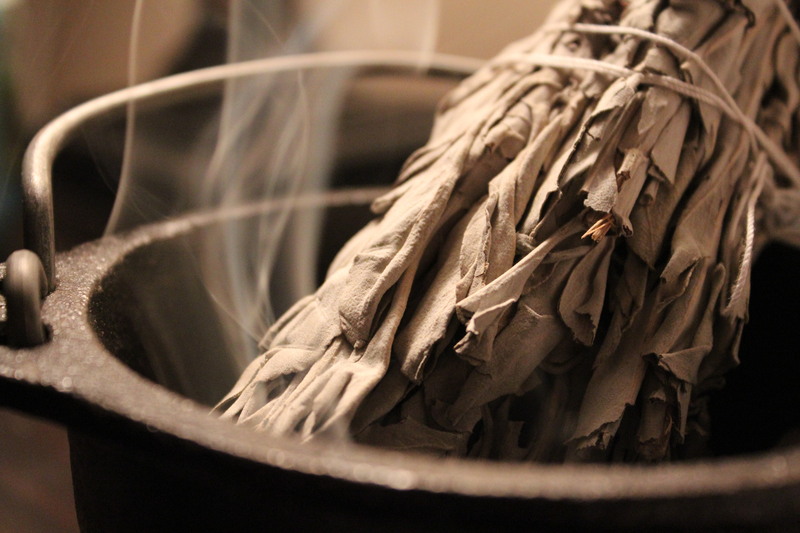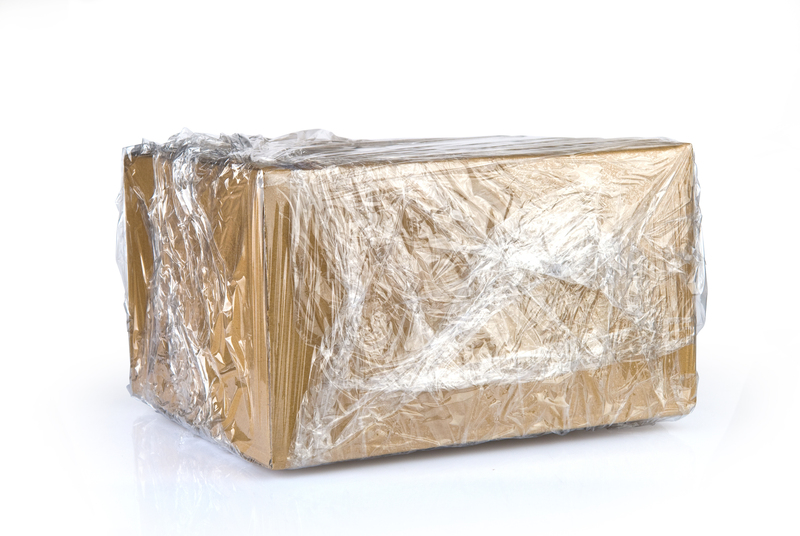Keep Your Freezer Safe with Proper Storage Methods
Posted on 06/06/2025
Keep Your Freezer Safe with Proper Storage Methods
When it comes to keeping your freezer safe and ensuring the longevity of both your appliance and frozen foods, adopting the right storage methods makes all the difference. Using correct freezing techniques safeguards the quality, taste, and safety of your meals. This comprehensive guide explores essential tips and best practices for safe freezer storage, helping you protect your family's food and get the most out of your freezer.

Why Proper Freezer Storage Matters
The freezer is a cornerstone of most modern kitchens. It preserves leftovers, prolongs the shelf-life of groceries, and allows you to stock up on seasonal produce. However, poor storage practices can accelerate freezer burn, cause food spoilage, and undermine your food's safety.
- Maintain food safety: Properly storing food in your freezer slows the growth of harmful bacteria.
- Retain food quality: Adequate packaging and organization help preserve flavor, texture, and nutrients.
- Prevent waste: When you know how to store food in your freezer, you reduce unnecessary discards and save money.
The Fundamentals of Safe Freezer Storage
Know Your Freezer's Temperature
Before placing anything in your freezer, ensure the temperature is set to 0?F (-18?C) or lower. At this temperature, bacteria and molds remain dormant, keeping your food safe for extended periods.
- Use a freezer thermometer to verify the temperature is consistently at or below 0?F.
- Avoid overcrowding; allow cold air to circulate freely to maintain uniform temperature.
Choose Proper Storage Containers
Selecting the right packaging is crucial for freezer safety. High-quality, airtight, and freezer-safe containers or bags prevent both air and moisture from seeping in, protecting your food from freezer burn and contamination.
- Freezer bags: Specially designed to withstand low temperatures and protect against moisture loss.
- Plastic containers: Look for BPA-free containers with tight-sealing lids.
- Aluminum foil and freezer paper: Ideal for wrapping meats, breads, and baked goods.
- Vacuum sealers: Help remove excess air, maximizing longevity and food safety in the freezer.
Avoid These Common Freezer Storage Mistakes
Storing food improperly can compromise both safety and quality. To keep your freezer safe, avoid:
- Using containers not intended for freezing
- Leaving air pockets, which cause freezer burn
- Storing hot or warm food, which raises the overall freezer temperature
- Failing to label or date items, leading to forgotten or expired foods
How to Store Different Types of Foods in Your Freezer
Meat and Poultry
To ensure meat stays safe and delicious in the freezer:
- Wrap tightly: Use plastic wrap, freezer paper, or aluminum foil around the original packaging.
- Double-bag for long storage: Prevent freezer burn for meats you plan to store for more than a couple of months.
- Label cuts and dates: This ensures you use older items first and avoid guesswork.
- Freeze quickly: Fast freezing preserves meat texture and prevents ice crystals from forming.
Fruits and Vegetables
Vegetables and fruits require specific prep to ensure safe and tasty freezing.
- Blanch vegetables: Briefly boiling, then cooling veggies before freezing halts enzymes, keeping colors and nutrients.
- Pat dry: Remove excess moisture to prevent clumping and freezer burn.
- Pre-portion fruits: Slice and freeze on trays before bagging to keep pieces separate and easy to use.
Baked Goods and Dairy
Many baked goods and some dairy items handle the freezer well if prepared correctly.
- Wrap bread and cakes: Use aluminum foil or plastic wrap, then place in a freezer-safe bag.
- Freeze cheese in blocks: Grated cheese also freezes well in airtight bags.
- Butter and yogurt: Butter freezes excellently; yogurt texture may change, but it's still usable in cooking.
Prepared Meals and Leftovers
Efficient meal prep relies on proper freezing of cooked dishes and leftovers.
- Cool thoroughly first: Hot items can raise freezer temp and cause nearby foods to thaw and refreeze.
- Use airtight containers: Prevent flavor transfer and keep food fresh.
- Label with description and date: Aids rotation and prevents accidental eating of spoiled food.
Organizing Your Freezer for Maximum Safety and Efficiency
Why Freezer Organization Matters
A cluttered freezer isn't just annoying--it can also be unsafe. Proper organization improves air flow and prevents forgotten foods.
Smart Freezer Storage Solutions
- First in, first out (FIFO): Place newer items behind older ones to use items before they expire.
- Group by type: Keep meats, vegetables, prepared meals, and baked goods in separate zones.
- Stack efficiently: Lay bags and containers flat, then stack vertically to optimize space.
- Use bins and baskets: These keep similar items together and make it easier to find what you need.
Label Everything
Every item should be labeled with the food type and date it was frozen. Use freezer-safe markers or labels that won't peel off or fade.
Preventing and Identifying Freezer Burn
What Is Freezer Burn?
Freezer burn happens when air contacts food, causing dehydration and oxidation. It rarely makes food unsafe, but it does affect taste and texture. Signs include dull, grayish spots or icy crystals on the surface.
How to Prevent Freezer Burn
- Eliminate air: Use vacuum sealers or press out as much air as possible from bags before sealing.
- Use tight packaging: Wrap foods snugly in plastic wrap or foil before putting in bags or containers.
- Don't freeze too long: Most foods are best used within 3-6 months, though some can last up to 12 months when properly stored.
What to Do If You Find Freezer Burn
- Cut away heavily burned sections before cooking.
- Use freezer-burned items in soups or stews to minimize textural changes.
Keeping Your Freezer Clean and Maintained
Regular Cleaning Routines
A clean freezer is a safe freezer. Set a schedule to defrost and clean your freezer every 6-12 months, or immediately if you notice spills, frost buildup, or foul odors.
- Unplug and empty: Remove all food and shelves before cleaning.
- Wipe down surfaces: Use a solution of baking soda and water for safe, odor-free cleaning.
- Dry thoroughly: Prevents ice from reforming too quickly and inhibits mold growth.
- Restock thoughtfully: Dispose of expired or freezer-burned foods before returning items.
Defrosting the Freezer
Many modern freezers are frost-free. However, if you have a manual-defrost model, periodically removing ice buildup ensures optimal freezer performance and food safety.
Tips for Power Outages: Keeping Freezer Food Safe
What to Do Before a Power Outage
- Keep your freezer full: A packed freezer stays colder longer in a power outage. If needed, use frozen water bottles to fill empty space.
- Group frozen items together: This preserves the cold for extended periods.
During the Outage
- Keep the door closed: An unopened freezer can keep food safely frozen for up to 48 hours.
- Monitor temperature: If you have a freezer thermometer, check to ensure food stays at or below 0?F.
After Power Returns
- Check for ice crystals: If foods still have ice crystals and feel cold, they are safe to refreeze or cook.
- If in doubt, throw it out: Never taste food to determine safety. Better safe than sorry!

Frequently Asked Questions About Safe Freezer Storage
How long can you safely store food in the freezer?
Many foods remain safe indefinitely at 0?F, but taste and texture deteriorate over time. For best results, use:
- Meats: 4-12 months
- Poultry: 9-12 months
- Fish: 2-6 months
- Bread: 3-6 months
- Vegetables: 8-12 months (blanched)
Can you refreeze thawed food?
Refreezing is only safe if the food is still at refrigerator temperature (below 40?F) and has visible ice crystals. Otherwise, cook before refreezing.
Why should you not freeze some foods?
Certain foods--like lettuce, cucumbers, cream-based sauces, and eggs in shells--do not freeze well and can become unsafe due to textural or chemical changes.
Conclusion: Prioritize Safe Freezer Storage for Better Health and Less Waste
By mastering proper freezer storage methods, you not only safeguard your food but also ensure your family's health and make the most of your grocery budget. Remember to keep your freezer organized, invest in quality packaging, label everything, and monitor temperatures regularly. These small steps guarantee food safety, prevent freezer burn, and reduce waste. With the right strategies, your freezer becomes your best ally in the kitchen, delivering convenience and peace of mind with every frozen meal.
Keeping your freezer safe is an ongoing commitment--use these tips as your long-term guide to healthy, efficient freezing!



